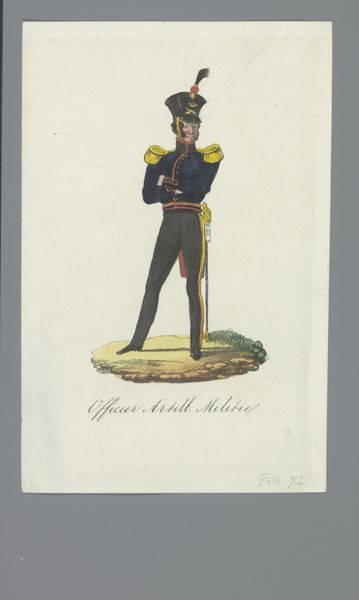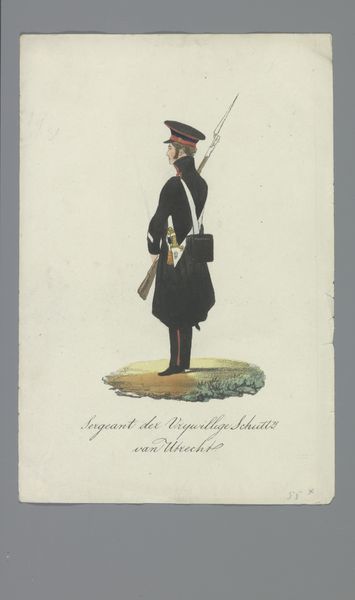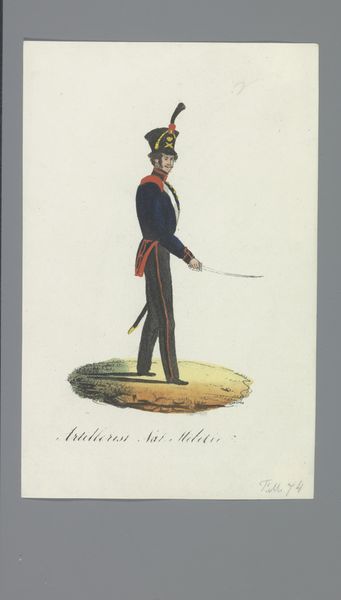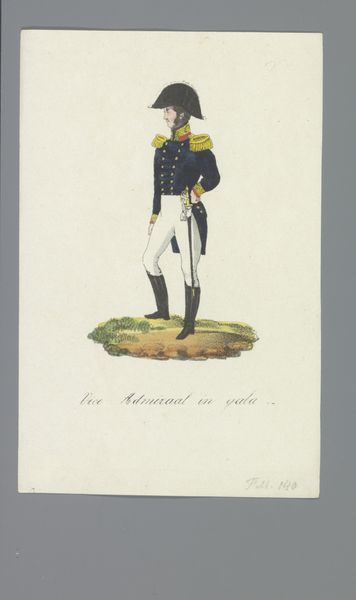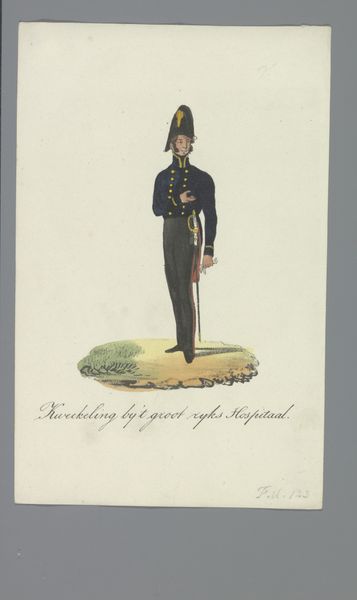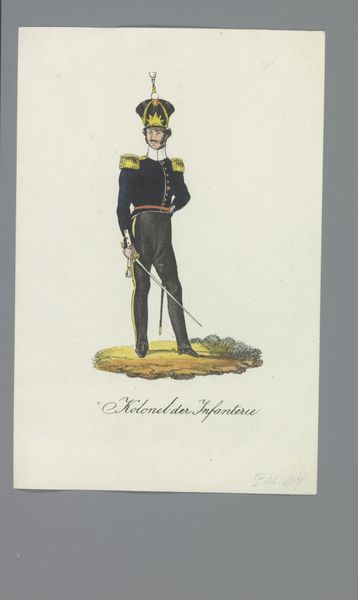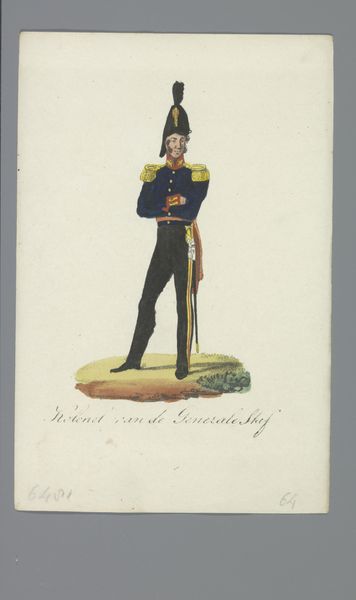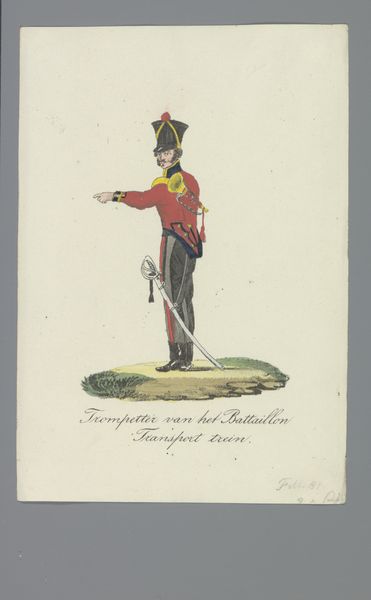
drawing, watercolor
#
portrait
#
drawing
#
watercolor
#
romanticism
#
costume
#
watercolour illustration
#
genre-painting
#
history-painting
Dimensions: height 170 mm, width 110 mm
Copyright: Rijks Museum: Open Domain
Editor: Here we have Albertus Verhoesen's "Tamboer der Artill: Militie," a watercolor drawing from somewhere between 1835 and 1850. The first thing that strikes me is the focus on detail in the uniform. It feels very precise, almost like a study. What can you tell me about what we’re seeing here? Curator: Notice the careful rendering of the drum major's attire, every braid, every button meticulously captured. But what do these symbols communicate? His uniform, adorned with gold epaulettes and a tall feathered hat, isn't just clothing, is it? It speaks to power, status, and belonging. Editor: So the clothing itself is a visual language? Curator: Precisely. Consider how military uniforms, throughout history, have served to instill both pride within the ranks and awe in the observer. Look at the way the artist rendered the drum itself, the focal point alongside the figure. Does the instrument function beyond mere musicality here? Editor: Maybe it's a symbol of order or discipline? I mean, a drum sets the pace, right? Curator: Indeed. Rhythm, order, control – all essential to military efficacy. But think further, the drum precedes the artillery. The drum is voice, a method to inspire others. What memories are evoked by the visual imagery, its association with conflicts? And what psychological effect might these symbols of military presence have on a viewer, even today? Editor: So, the artwork isn't just about this one soldier, but about how symbols shape our understanding of history and power? That's a great point. Curator: Exactly. By understanding these visual symbols, we begin to unravel layers of cultural meaning embedded within the artwork and how that plays across time. Editor: I hadn't thought of it that way before. It gives the image so much more depth.
Comments
No comments
Be the first to comment and join the conversation on the ultimate creative platform.
